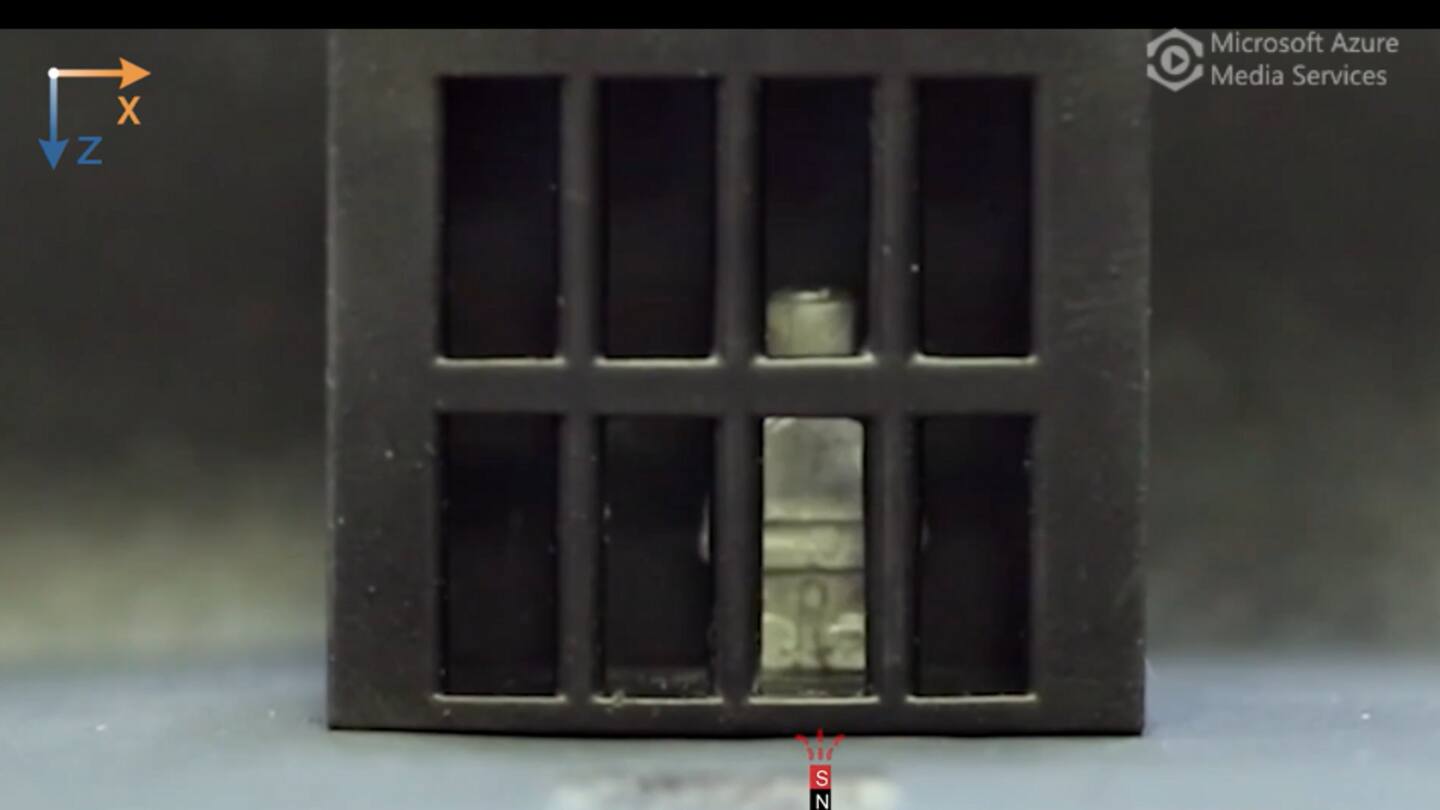
Scientists create a unique robot with shape-shifting capabilities
What's the story
Scientists from China and the US have designed a liquid metal robot that can reversibly transition between liquid and solid states. In a particular experiment, the 10-millimeter tall robot, shaped like a human, could easily liquefy itself to escape through the cage it was placed in. This technology can be employed for diverse applications, which include flexible electronics and drug delivery.
Context
Why does this story matter?
A robot that can switch shapes, how amazing is that? Along with their shape-shifting ability, the robots are magnetic and can conduct electricity. Scientists have been developing magnetically controlled soft robots for years. However, this robot, which can swap between solid and liquid states, does not have the disadvantages that robots of the harder and softer states possess.
Development
The idea of shape-shifting robot was inspired by sea cucumbers
While conventional robots have a hard and stiff structure, soft robots are flexible but fragile. Scientists then came up with the concept of a robot that can change shapes and is both strong and flexible. The idea was inspired by sea cucumbers, which "can very rapidly and reversibly change their stiffness," according to Carmel Majidi, from Carnegie Mellon University.
Experiment
How did the robot manage to escape through the cage?
The robot is composed of gallium, a soft metal with a low melting temperature of about 30 degrees Celsius, embedded with microscopic, magnetic particles. These particles, when subjected to an alternating magnetic field, heat up and melt gallium. Hence, the external magnetic field guides the direction of the liquid metal, as in the case where the robot could pass through cage bars.
Information
The robots could even climb walls
How does the miniature robot regain its original person-like form? This happens when it's cooled in a mold. The study notes that similar robots "jumped over moats, climbed walls, and even split in half to cooperatively move other objects around before coalescing back together."
Official words
The magnetic particles also impart mobility to the robots
"The magnetic particles here have two roles," said Majidi in a statement. "One is that they make the material responsive to an alternating magnetic field, so you can, through induction, heat up the material and cause the phase change. But the magnetic particles also give the robots mobility and the ability to move in response to the magnetic field."
Biomedical applications
The robots can help assemble mechanical parts in hard-to-reach spaces
In another experiment, the team used the robots to remove a foreign object stuck in a model stomach and to specifically deliver drugs to the same organ. Researchers also demonstrated that robots could be employed as a universal mechanical"screw" for assembling parts in hard-to-reach spaces and could serve as "smart soldering robots" for wireless circuit assembly and repair.
Future
Further studies are required to better understand the implications
More studies have to be carried out to "further explore how these robots could be used within a biomedical context," said Majidi. "What we're showing are just one-off demonstrations, proofs of concept, but much more study will be required to delve into how this could actually be used for drug delivery or for removing foreign objects," he added.
Twitter Post
Check out how the robot "melts" through the cage bars
It’s not exactly the T-1000—yet. But researchers have created a liquid metal robot that can mimic the shape-shifting abilities of the silvery, morphing killer robot in Terminator 2: Judgement Day. https://t.co/tyNW1CPLCy pic.twitter.com/WV5NIsQQHn
— News from Science (@NewsfromScience) January 25, 2023